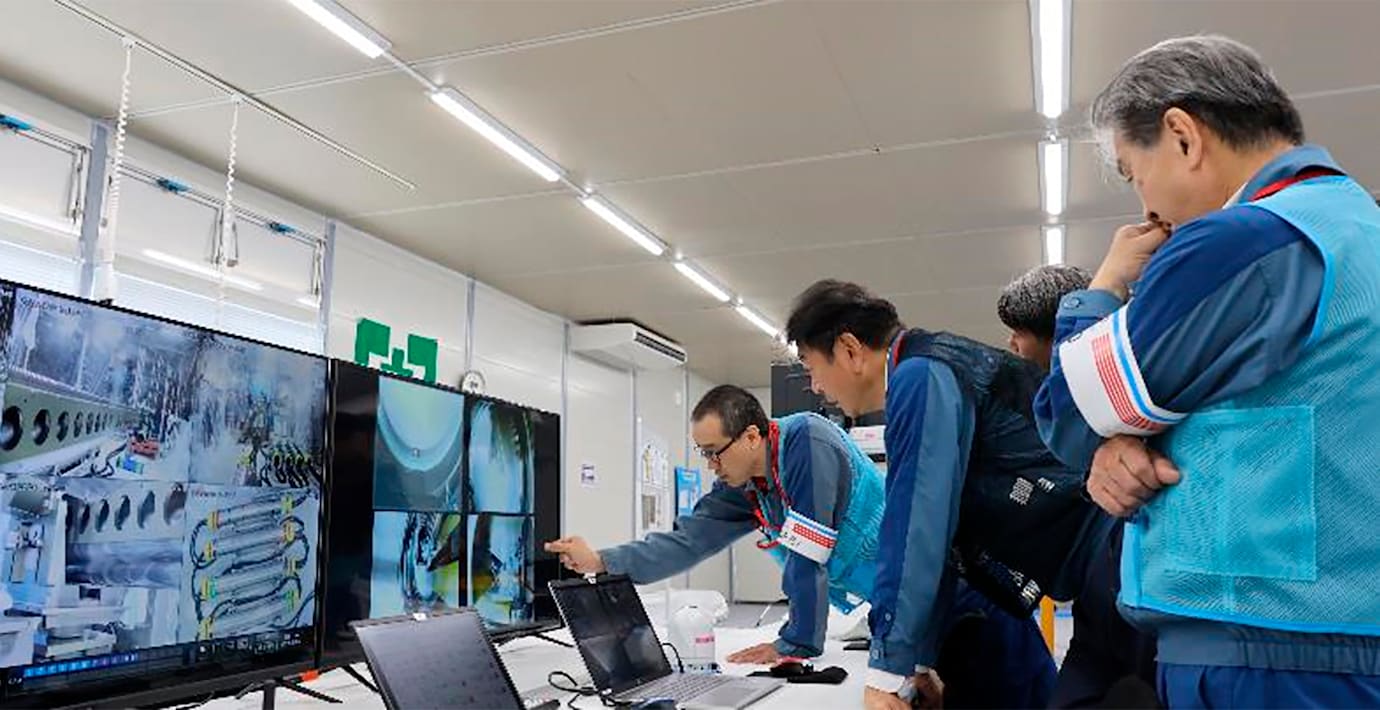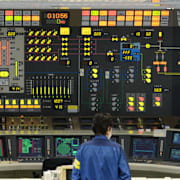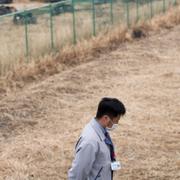
Specialrobot ska hämta prover inne i Fukushima
En specialdesignad robot har återupptagit sitt uppdrag att ta sig in i det havererade kärnkraftverket Fukushima, rapporterar flera medier. För tre veckor sedan pausades insatsen på grund av tekniska problem.
Målet med operationen, som ses som mycket komplex, är att hämta mindre än tre gram av det uppskattningsvis 880 ton radioaktiva skräpet i anläggningen.
Provet ska användas för att utveckla nya metoder för uppstädningen efter Fukushima-olyckan som inträffade 2011.
Fukushima-olyckan 2011
Wikipedia (en)
The Fukushima nuclear accident was a major nuclear accident at the Fukushima Daiichi nuclear power plant in Ōkuma, Fukushima, Japan which began on 11 March 2011. The proximate cause of the accident was the 2011 Tōhoku earthquake and tsunami, which resulted in electrical grid failure and damaged nearly all of the power plant's backup energy sources. The subsequent inability to sufficiently cool reactors after shutdown compromised containment and resulted in the release of radioactive contaminants into the surrounding environment.: 56–58 The accident was rated seven (the maximum severity) on the INES by NISA, following a report by the JNES (Japan Nuclear Energy Safety Organization). It is regarded as the worst nuclear incident since the Chernobyl disaster in 1986, which was also rated a seven on the INES.
No adverse health effects among non-worker Fukushima residents have been documented that are directly attributable to radiation exposure from the accident, according to the United Nations Scientific Committee on the Effects of Atomic Radiation.: 106 Insurance compensation was paid for one death from lung cancer, but this does not prove a causal relationship between radiation and the cancer. Six other persons have been reported as having developed cancer or leukemia. Two workers were hospitalized because of radiation burns, and several other people sustained physical injuries as a consequence of the accident.
Criticisms have been made about the public perception of radiological hazards resulting from accidents and the implementation of evacuations (similar to the Chernobyl nuclear accident), as they were accused of causing more harm than they prevented. Following the accident, at least 164,000 residents of the surrounding area were permanently or temporarily displaced (either voluntarily or by evacuation order). The displacements resulted in at least 51 deaths as well as stress and fear from radiological hazards.
Investigations faulted lapses in safety and oversight, namely failures in risk assessment and evacuation planning.: 61, 84–88 Controversy surrounds the disposal of treated wastewater once used to cool the reactor, resulting in numerous protests in neighboring countries.
Fukushima
Omni är politiskt obundna och oberoende. Vi strävar efter att ge fler perspektiv på nyheterna. Har du frågor eller synpunkter kring vår rapportering? Kontakta redaktionen


